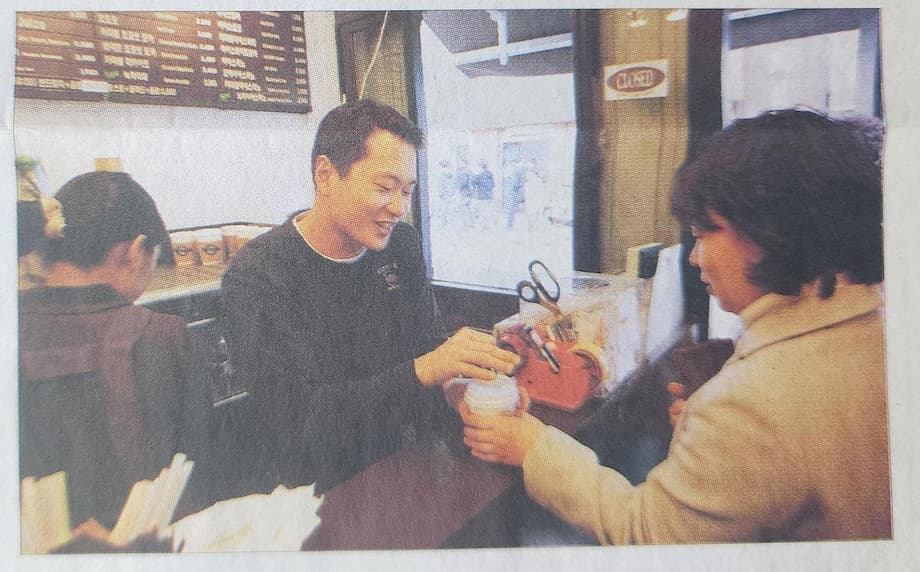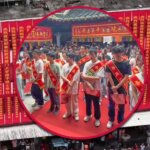The Dawn of Korea’s Coffee Revolution
In the 1990s, something transformative was brewing in South Korea. What began as a modest shift in beverage preference quickly evolved into a full-blown cultural phenomenon, reshaping daily routines, social spaces, and even the urban landscape. Today, Korea is recognized as one of the world’s coffee capitals, but the roots of this obsession trace back to a remarkable revolution that unfolded in the last decade of the 20th century.
- The Dawn of Korea’s Coffee Revolution
- From Dabang to Designer Cafés: The Changing Face of Coffee
- Why Did Coffee Take Hold So Deeply in Korea?
- The Café as a Cultural Sanctuary
- Instant Coffee vs. Espresso: A Tale of Two Cultures
- The Arrival of Starbucks and the Franchise Boom
- Specialty Coffee and the Rise of the Barista
- Convenience Stores and the Democratization of Coffee
- Social and Economic Impacts
- Comparisons and Contrasts: North Korea and Beyond
- In Summary
For much of the 20th century, coffee in Korea was a symbol of status and modernity, enjoyed mainly by the elite in exclusive tearooms known as dabang. But by the 1990s, the country’s rapid economic growth, urbanization, and exposure to global trends set the stage for a dramatic transformation. Cafés became not just places to drink coffee, but social sanctuaries—spaces to study, date, gossip, and escape the pressures of daily life. This was the era when Korea’s coffee revolution truly began to percolate.
From Dabang to Designer Cafés: The Changing Face of Coffee
To understand the 1990s coffee revolution, it’s essential to look back at the history of coffee in Korea. Coffee first arrived in the late 19th century, when Emperor Gojong tasted it at the Russian Embassy. The first Korean coffee shop opened in 1902, catering to diplomats and the elite. Through the Japanese occupation and the Korean War, coffee remained a luxury, with instant coffee introduced by American soldiers but rarely available to the masses due to import restrictions.
By the 1960s and 1970s, instant coffee mixes—convenient sachets combining coffee, sugar, and creamer—became widely available, thanks to local production by companies like Dongsuh Foods. These mixes, known as “coffee mix,” democratized coffee, making it a daily habit for office workers and students alike. The dabang culture flourished, with tearooms serving as venues for business meetings, dates, and even political gatherings. Yet, the coffee itself was often secondary to the social experience.
As Korea’s economy boomed in the 1980s, modern and themed cafés began to emerge, introducing espresso machines and freshly roasted beans. Still, instant coffee dominated, and the idea of paying a premium for a cup of brewed coffee seemed extravagant to many.
The 1990s: A New Brew Emerges
The 1990s marked a turning point. Young Koreans, inspired by global trends and the successful Seoul Olympics in 1988, began to seek out cleaner, more stylish spaces than the smoky, outdated dabang. New cafés with chrome fixtures, large windows, and jazz soundtracks opened in urban centers, offering espresso, cappuccino, and other specialty drinks. These cafés quickly became social hubs, filling a void in a society where inviting friends into one’s small apartment was uncommon.
As one expatriate recalled in The Korea Times, “Inside, young Koreans sipped espresso and cappuccino, chatting over jazz playing softly in the background. It could’ve been Paris or New York—except we were in a rapidly modernizing corner of East Asia, and this was the start of a cultural shift.”
Each new café tried to outdo the others with quirky names—Poem, Mozart, Chaplin, The Bodyguard—and innovative concepts, like tableside siphon brewing. Free refills, once unheard of, became a selling point. Themed interiors and unique experiences became the norm, reflecting a growing desire for both quality and novelty.
Why Did Coffee Take Hold So Deeply in Korea?
Several factors contributed to coffee’s meteoric rise in Korea during the 1990s:
- Urbanization and Social Space: As cities grew denser, cafés offered a rare oasis of privacy and comfort, especially for young people and office workers.
- Economic Growth: Rising incomes meant more disposable income for leisure activities, including café visits and premium coffee drinks.
- Globalization: Exposure to Western culture through travel, media, and international events like the Olympics fueled demand for new experiences and tastes.
- Convenience and Habit: Instant coffee mixes had already made coffee a daily habit, paving the way for more sophisticated preferences.
Surveys show that coffee is now the second most liked food or beverage in Korea, after kimchi and ahead of rice. Koreans consume an average of 405 cups of coffee per person per year—more than twice the global average. The phrase “Let’s get some coffee” has become a common greeting, and coffee is now an integral part of daily life, from morning commutes to late-night study sessions.
The Café as a Cultural Sanctuary
In the 1990s, cafés were more than just places to drink coffee—they were sanctuaries from the pressures of modern life. In a society known for its fast pace and high expectations, cafés offered a rare chance to slow down, reflect, and connect. The idea of escapism became intrinsic to Korean café culture. As one writer described, “Stepping into a café was an escape from the noisy and crowded streets of the city, and each café was unique in its décor and ambiance. You weren’t paying for the coffee, though; you were paying for the experience.”
This emphasis on atmosphere and experience persists today. Cafés in Korea are renowned for their creative interiors, from Hello Kitty themes to botanical gardens and even airplane cabins. Some offer unique menu items blending coffee with local ingredients like mugwort, red beans, or injeolmi (rice cakes). The café is not just a place to drink coffee—it’s a destination, a theme park for adults, and a stage for social interaction.
Instant Coffee vs. Espresso: A Tale of Two Cultures
Despite the rise of specialty cafés, instant coffee has never lost its grip on Korean society. The 3-in-1 coffee mix remains a staple in homes, offices, and convenience stores, prized for its affordability and convenience. Vending machines offering hot or iced instant coffee for a few hundred won became ubiquitous in the 1990s, especially in office buildings and universities.
However, the 1990s also saw the gradual acceptance of espresso-based drinks. Initially met with skepticism—many found espresso too bitter or strong—these drinks gained popularity as more Koreans traveled abroad and developed a taste for Western-style coffee. By the late 1990s, espresso had become mainstream, setting the stage for the arrival of global chains.
The Arrival of Starbucks and the Franchise Boom
The true tipping point came in 1999, when Starbucks opened its first store in Korea near Ewha Womans University. The response was immediate and overwhelming—lines stretched out the door, and within months, more locations sprang up across Seoul. Starbucks brought with it not just coffee, but a new way of experiencing it: takeout culture, customizable drinks, and a premium brand image.
Other international and domestic chains quickly followed, including Coffee Bean & Tea Leaf, Hollys Coffee, Tom N Toms, and Ediya. The number of cafés exploded—from around 800 in Seoul in 2005 to over 15,000 by 2019. Today, Korea boasts more than 91,000 cafés nationwide, with Seoul alone home to thousands of unique coffee shops.
Starbucks’ success in Korea is often attributed to its localization strategy—offering region-specific menu items, partnering with local conglomerates, and creating well-designed, comfortable spaces. The brand’s premium image, combined with limited-edition merchandise and loyalty programs, has made it a favorite among young consumers and professionals alike.
Specialty Coffee and the Rise of the Barista
While franchise chains dominate the market, the 1990s also laid the groundwork for Korea’s specialty coffee movement. The first specialty coffee shop, First House, opened in 1988, introducing higher-grade beans and espresso beverages. Through the 1990s and early 2000s, more Italian-style espresso cafés appeared, and by the mid-2000s, the “third wave” coffee movement took hold, emphasizing single-origin beans, manual brewing methods, and direct trade with farmers.
Brands like Coffee Libre, Anthracite Coffee, and Fritz Coffee Company have become leaders in the specialty scene, focusing on quality, sustainability, and education. Baristas are now celebrated as artisans, competing in international championships and raising the profile of Korean coffee culture worldwide.
Convenience Stores and the Democratization of Coffee
Another key player in Korea’s coffee revolution has been the convenience store. In the 1990s, these stores began offering a dizzying array of ready-to-drink coffees, instant mixes, and affordable snacks. The fierce competition among convenience store chains led to constant innovation, with new products introduced weekly. For many Koreans, grabbing a quick coffee from a vending machine or convenience store became part of the daily routine, further cementing coffee’s place in the national diet.
Social and Economic Impacts
The coffee revolution has had profound social and economic effects in Korea. The café boom has created new opportunities for entrepreneurs, designers, and baristas, while also driving up rents and contributing to gentrification in some neighborhoods. Cafés have become important venues for business meetings, study sessions, and even romantic dates, reflecting changing social norms and lifestyles.
At the same time, the intense competition and high operating costs have made it challenging for independent cafés to survive. Many now diversify their offerings, selling desserts, merchandise, or even providing pet-friendly spaces to attract customers. The market continues to evolve, with trends like “teamakase” tea-tasting experiences emerging as alternatives to coffee-centric outings.
Comparisons and Contrasts: North Korea and Beyond
While South Korea’s coffee culture has flourished, the situation in North Korea is markedly different. There, coffee remains a luxury for the elite, with imitation Western brands and high prices out of reach for most citizens. Yet even in Pyongyang, the allure of coffee culture is evident, with upscale cafés mimicking global chains as symbols of modernity and status.
Internationally, Korea’s coffee revolution has drawn attention from investors, tourists, and coffee professionals. Seoul is now considered a global coffee capital, attracting visitors eager to experience its vibrant café scene and innovative drinks. The country’s unique blend of tradition and modernity is reflected in every cup, from the humble instant mix to the meticulously crafted pour-over.
In Summary
- Korea’s 1990s coffee revolution transformed coffee from a luxury for the elite into a daily necessity and social ritual for all.
- The rise of stylish cafés in the 1990s provided new social spaces and fueled demand for higher-quality coffee and unique experiences.
- Instant coffee mixes remain popular, but espresso-based drinks and specialty coffee have gained ground, especially with the arrival of global franchises like Starbucks.
- Cafés are now cultural sanctuaries, offering escape, connection, and creativity in a fast-paced society.
- The coffee boom has had significant social and economic impacts, driving innovation, entrepreneurship, and even urban development.
- Korea’s coffee culture continues to evolve, blending local flavors, global trends, and a passion for both convenience and quality.




